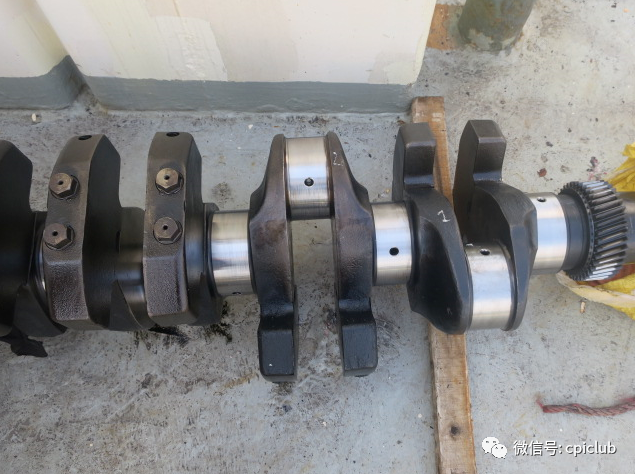
Summary
As the core component of the diesel engine, the crankshaft is used to convert the reciprocating motion of the piston into the rotary motion of the shaft system. In order to ensure the realization of this movement, the bearing bush plays a vital role. In actual use, although the working conditions of the crankshaft and the bearing bush are not like pistons, cylinders and other harsh environments with high temperature and high pressure, they need to withstand sharply changing impact loads, bending stresses, and rotational vibration. The crankshaft journal and the surface of the bearing bush have strong friction, and at the same time are subjected to the alternating gas force, reciprocating inertia force and centrifugal force of each cylinder. As a supporting component, the bearing bush has a high probability of damage during the actual operation of the equipment, and once the bearing bush is damaged or damaged, it will cause scratches, strains, burns, cracks on the surface of the crankshaft main journal and crank pin, and more , The crankshaft is deformed and broken, causing serious mechanical damage accidents such as scrapping the crankshaft. In the event of a crankshaft damage accident, especially the main engine crankshaft, the shipowner has to urgently arrange rescue and repair, which may result in huge repair costs, waiting for the time loss of the new crankshaft, etc. Therefore, in the actual turbine management work, the crankshaft bearing Monitoring and prevention of injuries are very important tasks. Below we use case analysis to briefly summarize the issues that should be paid attention to in the daily marine engineering management of such accidents.
# CASE1 #
The No. 2 auxiliary engine (model: M200L-UN, rated power 600PS/720Rpm) of the member ship A of the Association was operating with a 120KW load. The crew heard the abnormal sound of the No. 2 auxiliary engine, and the chief engineer immediately went to the engine room for inspection. When the chief engineer arrived at the central control room, he noticed that the No. 2 auxiliary engine had a low-pressure oil alarm. The chief engineer instructed the mechanic to switch the generators immediately and go to the No. 2 generator for inspection. When the chief engineer heard the abnormal noise next to the aircraft, he immediately returned to the central control room and stopped the No. 2 auxiliary engine. Subsequently, the chief engineer inspected the No. 2 auxiliary locomotive and found that it was heavy. Check the crankcase door and found that the 3-cylinder door is hotter than the other cylinders. After opening all the crankcase doors and checking, some metal shavings were found under the 3 cylinder. The bearing shell was found to be squeezed and crimped at the upper bearing cover. When using a torque wrench to remove the big end bolt of the No. 3 cylinder connecting rod, it was found that the connecting rod bolt numbered "1" on the left was slightly loosened, and at the same time it was in the crankcase. Many copper scraps were found at the bottom. After removing the bearing cover, it was found that the surface of the bearing cover was severely scratched, the bearing bush was severely worn, and the crank pin surface was also scratched. Through inspection, it was found that the big end of the connecting rod of other cylinders moved normally.
According to work records, the auxiliary engine had lifted the cylinder more than 2 months before the accident (operating time at the time of the accident: 900 hours), and replaced the piston ring (6 sets-Japanese spare parts) and the big end bearing bush of the connecting rod when lifting the cylinder. (6 sets-domestic spare parts) and the cylinder liner (1 piece) of the No. 2 cylinder. At the same time, the system lubricating oil was replaced. After the cylinder was lifted, the engineer found that some copper impurities were mixed in the oil when cleaning the oil filter. However, the reason for the appearance of the copper scraps was not further investigated, but the crankcase was checked frequently.

Figure 1 Scratched crank pin
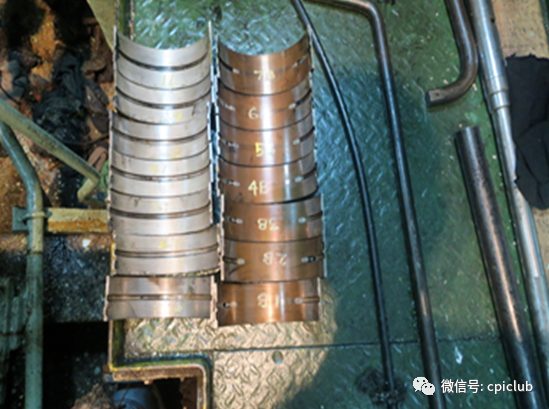
Figure 2 Damaged connecting rod big end bearing bush
# Analysis of the cause of the accident #
1. The connecting rod bolt numbered "1" at the big end of the connecting rod of the auxiliary engine No. 3 is loose. It is inferred that when the big end bearing bush of the connecting rod is replaced, the bolt is not tightened according to the requirements of the manual or the last is forgotten. The tightening procedure caused the bearing cap to loosen and the clearance between the bearing bush and the crank pin was abnormal.
2. When replacing the big end bearing bush of the connecting rod of the No. 2 auxiliary engine hoisting cylinder, the engineer did not inspect and measure the crank pin bearing clearance according to the instructions, so it is not clear whether the crank pin bearing clearance is normal. If the bearing clearance is too large or too small, it will affect the formation of the lubricating oil film between the fitting clearances.
3. When the engineers found copper impurities mixed in the lubricating oil at the initial stage, they did not carefully analyze the findings, and did not stop the machine to open all the bearings to check all the bearings, and take effective precautions, which resulted in the aggravation of abnormal bearing wear.
# CASE2 #
During the operation of the B-wheel of the association ship, the No. 2 auxiliary engine (model: Volvo D16C-A MG) was operating normally, and the No. 1 generator was started and powered on one day due to the start of the cargo pump. After the power was connected, the No. 2 auxiliary was found The lubricating oil pressure of the engine suddenly dropped, and the No. 2 generator was immediately de-loaded. At this time, the oil pressure dropped to 2.0 Bar, and a low oil pressure alarm was issued, and the No. 2 auxiliary engine was stopped immediately. In the afternoon of the next day, the engineer replaced the oil filter and oil, and found that there were many metal chips in the filter and oil. The cylinder head cover was disassembled, and the cylinder head accessories were checked without any problems. Open the oil pan and inspect it and found that there are a lot of metal shavings and metal sheets in the oil pan. After dismantling and inspecting 7 main bearings, it was found that the main bearing bush of No. 6/7 was burnt out, the main contact surface of main bush of No. 4/5 was pressed and expanded laterally, and the main bearing bush of No. 1/2 had strain marks; No. 4/5/ Poor fit of 6/7 tiles. There are obvious wear marks on the main journal of the 3rd/5/7th track. After disassembling and inspecting the connecting rod bushes of cylinders 1 to 6, it was found that the middle part of the connecting rod bushes of cylinders 1/2/3/4 were worn deep but no copper was exposed, and the middle part of the connecting rod bushes of the 6th cylinder was deep drawn and copper was exposed. , The tile hole is blocked by metal wear debris to varying degrees. There are blue-black burn marks on the piston pin and the contacting piston head of the third cylinder. The oil pump was disassembled and inspected, and no obvious problems were found.
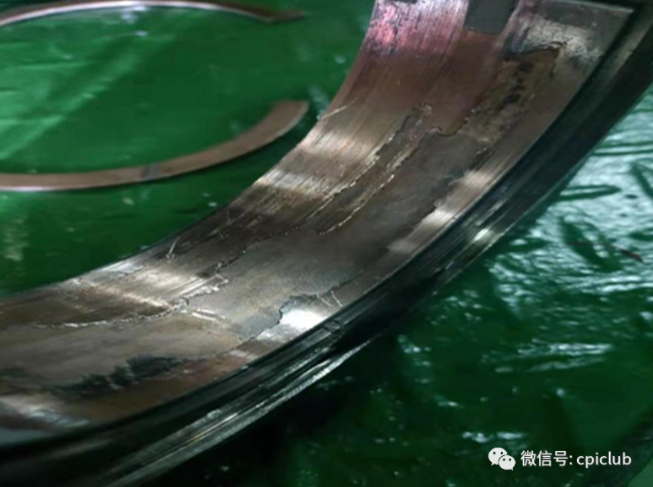
Figure 3 Damaged connecting rod big end bearing bush
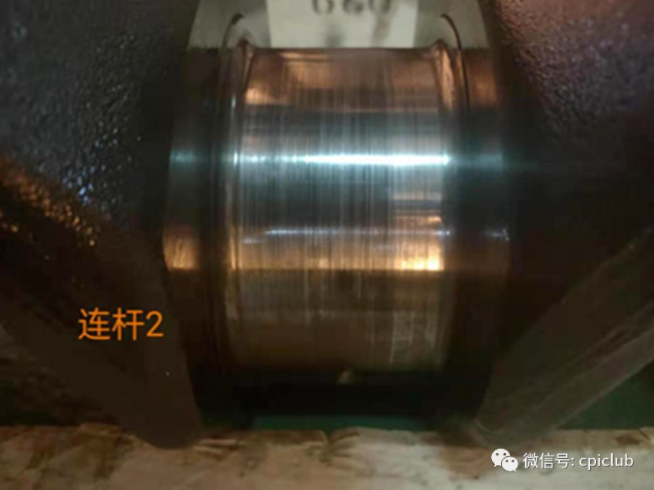
Figure 4 Scratched crank pin
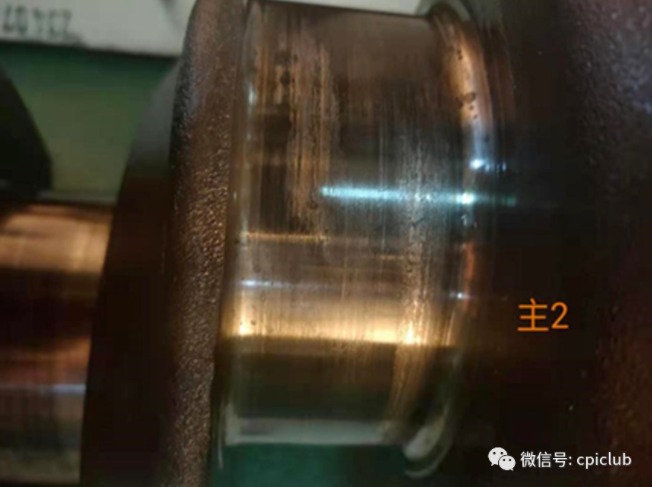
Figure 5 Abnormally worn crankshaft main journal
# Analysis of the cause of the accident #
1. After the accident, it is understood that when the lubricating oil used in the wheelset was replaced, the lubricating oil of the grade required by the original diesel engine was replaced with another brand of lubricating oil. By comparing the quality of the two lubricating oils There is a certain difference in the viscosity grade, and the lubricating oil has been used for too long, the various indicators of the lubricating oil have decreased, and the engineers failed to replace the lubricating oil in time according to the requirements of the new brand of lubricating oil, resulting in the deterioration of the lubrication quality of the main bearing and the crank pin bearing. This leads to increased wear of the bearing bush.
2. The engineer failed to regularly inspect the related parts of the auxiliary engine in accordance with the maintenance cycle requirements of the auxiliary engine manual, and failed to find the bearing damage in time.
# CASE3 #
Ship C of the association member ship (main engine model: 8P02-6/2L, maximum continuous power of 4400kw, rated speed 520Rpm, Shaanxi Diesel Engine Heavy Industry Co., Ltd.), prepared vehicles from an anchorage at 0500 on November 20, 20xx, and the vehicles were ready to enter When the port is berthing, the main engine gradually increases the load. When the main engine accelerates to 440RPM, all parameters are normal. After the main engine was running for a while, the engineer found that the main engine's third cylinder vibrated violently and abnormal noises, and immediately reduced the main engine's revolutions to the lowest speed of 280RPM. At the same time, the third cylinder's fuel supply was stopped. As the main engine could not be stopped immediately after entering the channel, he had to return to the anchorage for inspection. After the main engine was stopped at anchor, the inspection found that the big end of the connecting rod of the third cylinder was seriously damaged and the big end of the connecting rod was ablated. Subsequently, the cylinder head piston assembly was lifted out, and the third cylinder was inspected. It was found that the crank pin of the crankshaft was severely worn and the crew could not repair it. After that, the ship-sealed main engine 3-cylinder berthed at the dock, and the standby vehicle main engine 280RPM entered the port. After unloading, the same-cylinder standby vehicle was sent to a nearby shipyard for repair.
The crank pin of the third cylinder of the main engine was damaged and ablated due to the large-end bearing of the connecting rod, and the crank pin was severely worn. The shipyard engineer repaired the crank pin of the third cylinder by the repair dimension method. The diameter of the crankpin after repair is between 309.12mm and 309.14mm, but according to the manufacturer's regulations, the limit value of the crankshaft diameter is 309.0-0.032mm. The repaired diameter is already very close to the limit value, that is, it has reached the requirement for a new crankshaft, so the shipowner replaced it with a new crankshaft.
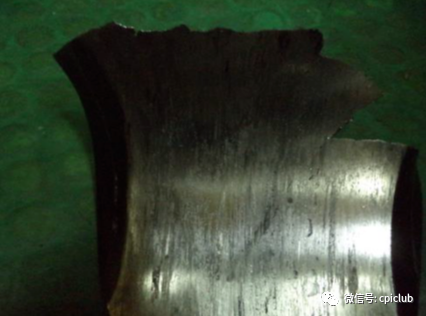
Figure 6 The upper bush of the big end of the connecting rod is severely worn
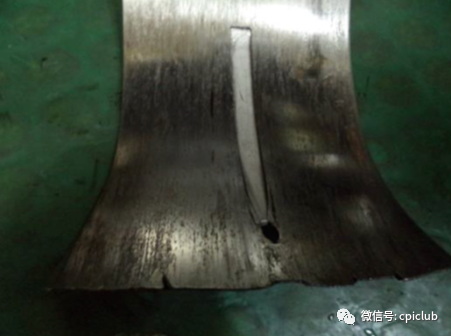
Figure 7 Seriously worn connecting rod big end bearing bushing
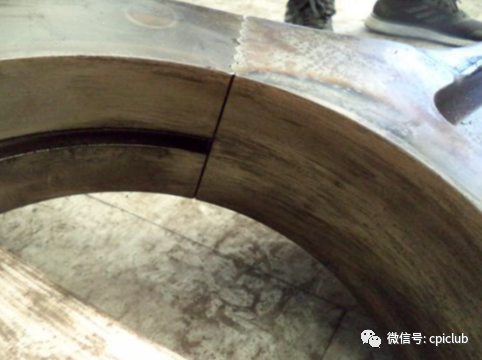
Figure 8 The joint surface of the big end bearing of the three-cylinder connecting rod is scratched
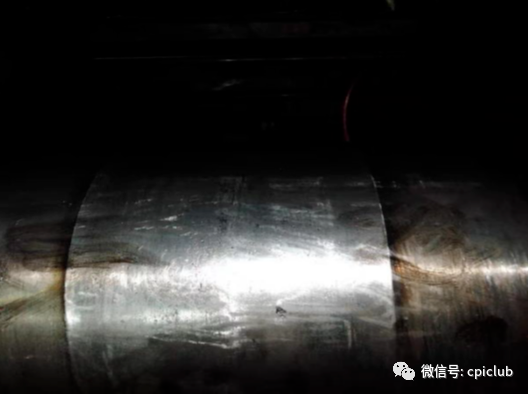
Figure 9 Crankshaft pin damaged by three-cylinder
# Analysis of the cause of the accident #
1. According to the on-site investigation and inspection, the maintenance records showed that all operating parameters of the main engine were normal before the accident, and the main lubricating oil pressure and temperature were normal. However, the subsequent oil test report provided by the shipowner showed that the BN (base number) of the lubricating oil was lower than the normal requirement, low solubility, low viscosity and excessive impurities, and no effective measures were taken on board to replace it in time. Unqualified lubricant. The contamination and deterioration of the lubricating oil make the lubrication conditions of the crankshaft journal and bearing bush worse.
2. If the abnormal wear of the bearing bush accumulates to a certain degree, the gap between the crank pin and the big end bush is too large, and the lubricating oil film is destroyed, resulting in the occurrence between the big end of the connecting rod and the crank pin during the vertical reciprocating motion. Impact, abnormal wear occurs, causing ablation of the big end of the connecting rod. The big end bearing bush of the connecting rod is severely worn and deformed, which also causes greater damage to the crank pin.
3. The material defect of the big end bearing bush of the connecting rod may also be a cause of the accident.
# Loss prevention advice #
There are many factors that affect crankshaft journal and bearing damage. The most common reasons are: bearing material defects, improper bearing clearance, poor lubrication of the bearing bush or impurities in the lubricating oil. In particular, the bearing bush is poorly lubricated. Once the lubricating oil film between the crankshaft journal and the bearing bush is destroyed, direct contact between the journal and the bearing bush will occur, causing semi-dry friction and dry friction, generating a large amount of frictional heat, and causing the surface of the bearing bush to be scratched. Or abnormal wear, the protective layer falls off, the alloy layer is damaged and melted, resulting in severe ablation of the bearing bush and scratches, strains and cracks on the surface of the crankshaft journal.
Through the above case and cause analysis, to prevent crankshaft journal and bearing damage, we believe that the following aspects should be paid attention to in the management of turbines:
1. The management personnel of the marine engine should strictly follow the requirements of the manual and the maintenance plan to check whether the clearance of each bearing of the diesel engine is normal, and carry out correct measurement and recording. Open in time to check the condition of the crankshaft journal and the working surface of the bearing bush to ensure that the clearance between the journal and the bearing bush is normal, and timely grasp key technical issues such as equipment performance, working status and wear.
2. Regularly check the pre-tightening force of the fixing bolts such as the main bearing and crank pin bearing, and tighten them several times in accordance with the torque and sequence specified in the manual and mark them for subsequent monitoring and inspection.
3. Use the correct and appropriate grades of lubricants, and regularly sample and test the lubricants according to the time of use to ensure that the various indicators of the lubricants are within the normal range. Once abnormalities are found, find the cause in time, and replace the lubricants if necessary.
4. Regularly clean the lubricating oil system filter to maintain the cleanness and quality of the lubricating oil, keep records of impurities and abnormal metal chips found during the cleaning process of the lubricating oil filter, and make preliminary analysis and judgments, and timely check the relevant parts , Clarify the reason at the first time to avoid the aggravation of abnormal damage.
5. Strengthen the monitoring of diesel engine cooling system and lubricating oil temperature and pressure to prevent excessive thermal expansion of parts that may be caused by high temperature and damage to normal fitting clearance, as well as low lubricating oil viscosity caused by high temperature, making the diesel engine crankshaft journal and bearing bushing impossible Maintain a normal oil film. Ensure that the lubricating oil pressure is within the normal range to prevent insufficient lubricating oil supply on the friction surface of the crankshaft journal and the bearing bush caused by the low lubricating oil pressure, which affects the formation of the oil film.
6. When purchasing new bearings, try to buy original spare parts. When replacing the bearings, the thickness difference and free opening dimensions of the bearings should be measured, and the appearance quality should meet the requirements. When assembling, make sure to apply lubricating oil clean and clean to prevent mixing of foreign particles.
# Concluding remarks #
Diesel engine crankshaft bearing bears the important task of "sacrificing oneself and protecting others". At the same time, as a supporting part under high load and high wear, it requires high comprehensive mechanical performance. Therefore, to prevent damage to the crankshaft bush of a diesel engine, it is not only necessary to focus on the lubrication condition of the diesel engine, but also other systems and operating conditions of the diesel engine will have an impact on it. Strengthen the daily maintenance of the diesel engine, ensure the good running state of the diesel engine, discover hidden troubles in time, and conduct systematic mechanism analysis based on the abnormal phenomena found, and trace the source to reduce or avoid the occurrence of such accidents, thereby ensuring the normal operation of the diesel engine. Work and ship and personal safety.
Note: The article comes from the Internet, if there is any infringement, please contact me to delete it!